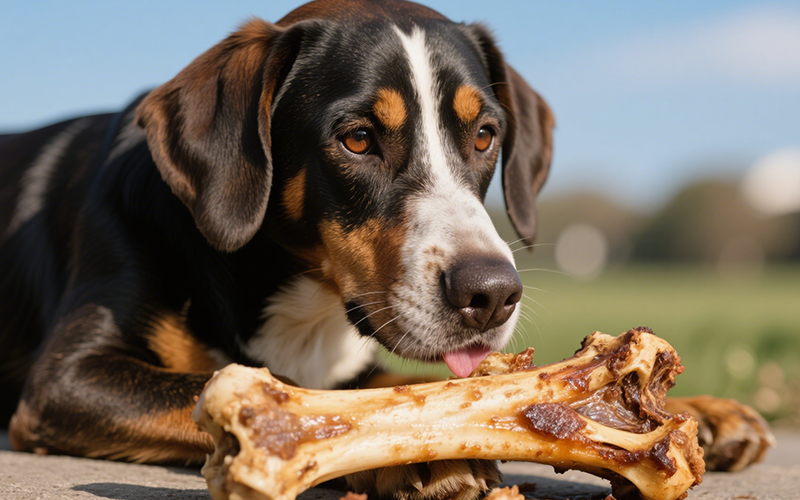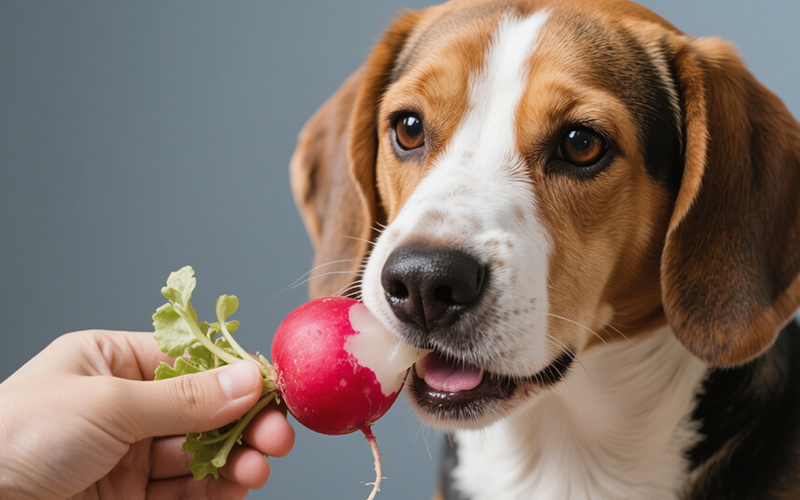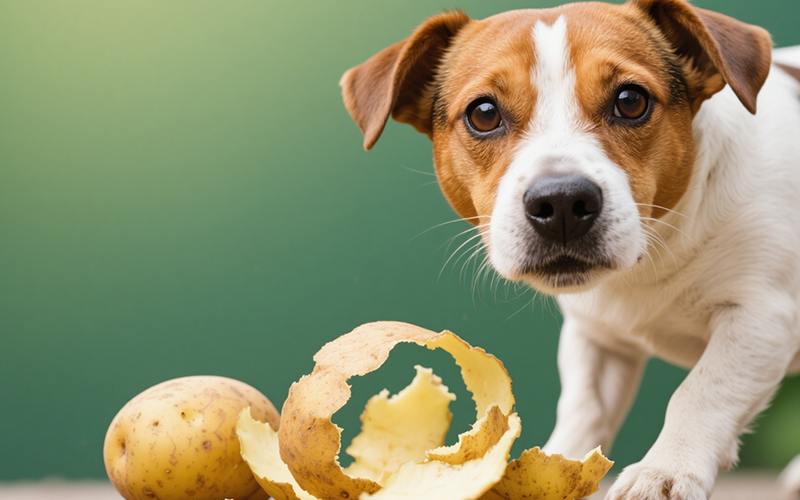Can Dogs Eat Cooked Bones? The Deadly Truth Vets Want You to Know!
- 14 Apr 2025 10:52
It's a scene etched in our collective imagination: a happy dog blissfully chewing on a bone. After enjoying a meal of chicken, pork, lamb, or beef, it might seem natural, even kind, to offer the leftover cooked bones to our eager canine companions. They smell delicious, seem like a perfect chew toy, and surely dogs are meant to eat bones, right? This line of thinking leads countless pet owners to ask the critical question: can dogs eat cooked bones? The answer from the veterinary community is not just a simple "no," but an urgent, emphatic **NO**. Feeding cooked bones of any kind to dogs is an incredibly dangerous practice, laden with severe risks that can lead to excruciating pain, costly emergency surgeries, and even death.
This comprehensive guide will explore exactly why cooked bones are universally condemned by veterinarians and animal safety experts. We will delve into the scientific changes that occur during cooking, detail the numerous life-threatening hazards they pose, debunk persistent myths, and highlight safe alternatives to satisfy your dog's natural chewing instincts. Our information is grounded in established veterinary science and adheres to E-E-A-T (Expertise, Authoritativeness, Trustworthiness) principles, aiming to provide the crucial knowledge needed to protect your beloved pet.

The Science Behind the Danger: How Cooking Transforms Bones
Understanding why cooked bones are hazardous requires looking at how the cooking process fundamentally alters their physical structure. Raw bones, while carrying their own set of risks (like bacterial contamination, parasites in some cases, and potential for tooth fracture on very hard types), retain a degree of moisture and flexibility due to their collagen content.
Cooking, whether through roasting, boiling, grilling, smoking, or frying, changes everything:
Dehydration and Brittleness: Heat drives moisture out of the bone matrix, making it dry, brittle, and much more likely to crack and splinter under pressure.
Altered Protein Matrix: The heat denatures the proteins (like collagen) within the bone, reducing its tensile strength and increasing its tendency to shatter into sharp, dangerous fragments rather than breaking more cleanly.
Think of the difference between a fresh tree branch (raw bone) and a dry, dead twig (cooked bone). The twig snaps easily into sharp pieces, while the fresh branch might bend or break more bluntly. This brittleness is the root cause of most dangers associated with cooked bones.
The Catalogue of Catastrophes: Why Cooked Bones Are Never Safe
The list of potential complications from feeding cooked bones is long, severe, and frequently encountered by veterinarians in emergency clinics. These aren't minor risks; they are potentially life-altering or fatal events:
1. Splintering and Internal Perforation (The Deadliest Risk)
This is the most acute and dangerous hazard. When a dog chews a cooked bone, it can easily shatter into numerous sharp, needle-like splinters.
Oral Trauma: Splinters can embed in the tongue, gums, or palate, or lacerate these soft tissues, causing significant pain and bleeding.
Esophageal Perforation: Sharp fragments can puncture the esophagus as the dog swallows.
Stomach or Intestinal Perforation: This is a critical emergency. A splinter can pierce the wall of the stomach or intestines, spilling digestive contents and bacteria into the abdominal cavity. This leads to peritonitis, a severe, rapidly spreading infection that causes intense pain, shock, and is often fatal without immediate, complex emergency surgery and intensive post-operative care. The dangers of cooked bones for dogs causing perforation cannot be overstated.
2. Choking Hazard
Pieces of cooked bone, regardless of size, can become lodged in the dog's airway.
Location: Can obstruct the pharynx (back of the throat), larynx (voice box), or trachea (windpipe).
Consequences: Complete blockage cuts off airflow, leading to suffocation and death within minutes if the object isn't dislodged. Even partial blockage is a terrifying emergency requiring immediate veterinary intervention.
3. Intestinal Obstruction (Blockage)
Cooked bone fragments are essentially indigestible. If a dog swallows pieces too large to pass through the digestive tract, they can cause a blockage, typically in the small intestine.
Mechanism: Food and gas cannot pass beyond the obstruction point.
Symptoms: Include persistent vomiting (often forceful), loss of appetite, dehydration, severe abdominal pain, lethargy.
Treatment: Requires emergency surgery to locate and remove the blockage. Delay can lead to bowel damage (necrosis) or rupture.
4. Severe Mouth, Tongue, and Throat Injuries
Even if perforation doesn't occur, the sharp edges of broken cooked bones can wreak havoc.
Lacerations requiring stitches.
Bone fragments getting wedged between teeth or embedded in the gums, causing pain and infection.
Damage to the throat lining during swallowing.
5. Dental Damage: Fractured Teeth
Paradoxically, while cooked bones are brittle, they can also be extremely hard, especially large beef or pork bones. The force exerted by a dog's jaw trying to crack these bones can easily lead to painful tooth fractures.
Common Injuries: Slab fractures of the large upper premolars (carnassial teeth) and fractures of canine teeth are frequent.
Outcome: Requires veterinary dental evaluation and often costly treatment like tooth extraction or root canal therapy under general anesthesia.
6. Constipation and Rectal Damage (Obstipation)
Multiple small, indigestible bone fragments can compact in the large intestine and rectum, forming a solid mass that the dog cannot pass.
Condition: Known as obstipation (severe constipation).
Symptoms: Painful straining, passing small amounts of liquid stool or no stool at all, lethargy, abdominal discomfort.
Treatment: May involve multiple enemas or even manual de-obstipation under anesthesia. Sharp fragments can also cause rectal tearing and bleeding during straining.
This extensive list underscores why the answer to "can dogs eat cooked bones?" must always be no.
Common Myths vs. Veterinary Reality
Despite overwhelming evidence and veterinary warnings, certain myths about feeding cooked bones persist:
Myth 1: "It's natural for dogs to eat bones."
Reality: Dogs' ancestors ate *raw* bones from *fresh* kills as part of a whole prey diet, which is vastly different from isolated, cooked, brittle bones. Domestication and modern food processing have changed the context entirely.
Myth 2: "My previous dog ate cooked bones all the time and was fine."
Reality: This represents luck, not safety. It's akin to driving without a seatbelt and not having an accident – the risk remains catastrophic each time. Many dogs *aren't* fine and suffer severe consequences.
Myth 3: "Cooked bones clean teeth."
Reality: They are far more likely to *break* teeth or injure the mouth than clean them effectively. The risk of dental fracture or oral laceration far outweighs any minimal abrasive benefit. Proper dental chews and brushing are safe and effective.
Myth 4: "Only chicken bones splinter; beef/pork bones are okay if cooked."
Reality: ALL cooked bones become brittle and can splinter dangerously, regardless of the animal source. Cooked cooked beef bones, cooked pork bones, and cooked lamb bones are just as hazardous as cooked chicken bones.
Myth 5: "Boiling makes bones soft enough."
Reality: Boiling is a cooking method. It still removes moisture and alters the bone structure, making it brittle and unsafe.
The Unanimous Voice of Veterinary Professionals
Veterinarians, veterinary surgeons, emergency clinicians, and major animal health organizations like the American Veterinary Medical Association (AVMA) and the U.S. Food and Drug Administration (FDA) consistently and strongly advise against feeding cooked bones to pets. They witness the tragic outcomes firsthand – dogs suffering from painful obstructions, life-threatening perforations requiring complex surgeries, and debilitating dental injuries, all stemming from being given a seemingly harmless cooked bone.
The professional consensus is built on extensive clinical experience and evidence of harm. When a vet says "don't feed cooked bones," they are speaking from a place of wanting to prevent suffering and save lives.
Emergency Plan: What If My Dog Eats a Cooked Bone?
If the worst happens and your dog consumes a cooked bone, treat it as a potential emergency. Do not delay action.
Prevent Further Access: Immediately remove any remaining bones.
Assess the Situation: Note the type of bone (chicken, beef, etc.), its approximate size, and how much you think was ingested.
**Call Your Veterinarian or Nearest Animal Emergency Clinic IMMEDIATELY:** This is crucial. Explain what happened. Do not adopt a "wait and see" approach, as internal damage can occur without obvious initial signs.
Provide Key Information: Time of ingestion, type/size/amount of bone, dog's breed/size/weight/age, any pre-existing conditions, and any symptoms currently observed (gagging, vomiting, distress).
Follow Veterinary Instructions Precisely: Your vet is the only one who can assess the risk and recommend appropriate action. This might involve:
Immediate veterinary examination.
Diagnostic imaging (X-rays or ultrasound) to locate the bone/fragments and check for obstruction/perforation.
Endoscopy (using a camera) to potentially remove fragments from the esophagus or stomach if safe.
Hospitalization for close observation and supportive care (IV fluids).
Emergency surgery if perforation or obstruction is suspected or confirmed.
Inducing vomiting is usually **contraindicated** for sharp objects like bone splinters, as it can cause damage coming back up – **NEVER induce vomiting unless specifically instructed by your vet.**
Monitor Like a Hawk (If Sent Home): If your vet determines the risk is lower and advises monitoring, watch extremely closely for *any* signs of trouble: vomiting, diarrhea (with or without blood), lethargy, abdominal pain, loss of appetite, straining to defecate, restlessness. Report any changes immediately.
Knowing what happens if a dog eats a cooked bone involves understanding the potential for severe internal complications requiring prompt veterinary intervention.
Safe Alternatives That Satisfy the Urge to Chew
Fortunately, there are many safe and enjoyable ways to meet your dog's innate desire to chew without risking their life with cooked bones:
| Chew Type | Safety & Benefits | Considerations |
| Cooked Bones (Any Type) | None. Extremely Dangerous. | High risk of splintering, perforation, choking, blockage, dental damage. |
| Durable Rubber Chew Toys (e.g., KONG, West Paw) | Very safe for teeth/gut, long-lasting, mentally stimulating (can stuff). | Not edible; choose appropriate size/durability; inspect regularly for damage. |
| Dental Chews (VOHC Accepted) | Proven dental benefits, designed to be safely chewed and digested. Excellent alternative to cooked bones. | Check VOHC.org for list; monitor calories; ensure proper size. |
| Edible Non-Rawhide Chews (e.g., Bully Sticks, Antlers - *use caution*, Collagen Chews) | Satisfies chewing, often digestible. | Supervision vital; choking risk (esp. end pieces); antlers can be hard (tooth risk); calorie dense. |
| Certain Vegetables (e.g., Carrots, Celery) | Low calorie, safe to eat, provide some crunch. | Not durable for strong chewers; cut appropriately to prevent choking. |
Always choose chews appropriate for your dog's size, age, and chewing strength, and supervise chewing sessions.
Need Urgent Pet Safety Advice? PettureX Can Help!
Accidents involving pets eating dangerous items like cooked bones require fast, reliable information. The PettureX App offers innovative AI tools designed to support pet owners in stressful situations:
Object Identification: Quickly identify potentially hazardous items your pet may have ingested using your phone's camera.
AI Symptom Analysis: If your pet shows worrying signs after eating something harmful, input the symptoms for preliminary AI insights to help guide your conversation with your vet.
24/7 AI Vet Consultation: Get immediate answers to critical questions like, "What are the signs of internal bleeding after eating a cooked bone?" or seek guidance on managing minor issues anytime, day or night.
PettureX provides valuable, instant support. However, it is essential to remember that it provides preliminary guidance and **cannot replace a professional veterinary examination, diagnosis, or emergency treatment.** Always contact your local veterinarian immediately for urgent medical concerns, especially after ingestion of a cooked bone.
Conclusion: Cooked Bones Belong in the Trash, Not the Dog Bowl
To reiterate the definitive answer to "can dogs eat cooked bones?": **Absolutely not.** The cooking process transforms bones into brittle, hazardous objects that pose numerous severe and potentially fatal risks to dogs, including internal perforation, choking, obstruction, oral trauma, and dental fractures.
Key Takeaways:
Cooking makes ALL types of bones (beef, pork, chicken, lamb) brittle and dangerous.
The risks far outweigh any perceived benefits.
Veterinarians universally advise against feeding cooked bones.
Accidental ingestion requires immediate veterinary consultation.
Numerous safe and effective chew alternatives exist.
Protect your dog from unnecessary suffering and potentially devastating veterinary emergencies by ensuring they never have access to cooked bones. Dispose of them securely and provide safe, appropriate outlets for their natural chewing behaviors. Making informed, safe choices is a cornerstone of responsible and loving pet ownership.
Related

Radish Bites for Your Buddy? A Vet-Reviewed Guide on Whether Dogs Can Eat Radishes
- 22 Apr 2025
Potato Peels for Pooches? Unpeeling the Risks and Facts for Dog Owners
- 22 Apr 2025
Crunchy Curiosity: Can Dogs Safely Snack on Pork Rinds? A Deep Dive
- 21 Apr 2025
Pomegranate Seeds and Pooches: A Deep Dive into Whether Dogs Can Safely Indulge
- 21 Apr 2025
Can Dogs Eat Peaches? Vet Explains Benefits, Cyanide Risks & Safe Serving
- 16 Apr 2025
Can Dogs Eat Mulberries? Vet Explains Safety, Benefits & Potential Risks
- 16 Apr 2025
Can Dogs Eat Mozzarella? Vet Explains the Cheesy Truth (Risks & Benefits)
- 16 Apr 2025
Can Dogs Eat Mango Skin? Vet Explains Why It's a Risky Chew!
- 16 Apr 2025
Can Dogs Eat Maple Syrup? The Sugary Truth & Why Vets Advise Against It
- 16 Apr 2025
Can Dogs Eat Mac n Cheese? Vet Explains Why This Comfort Food Is Unsafe!
- 16 Apr 2025
